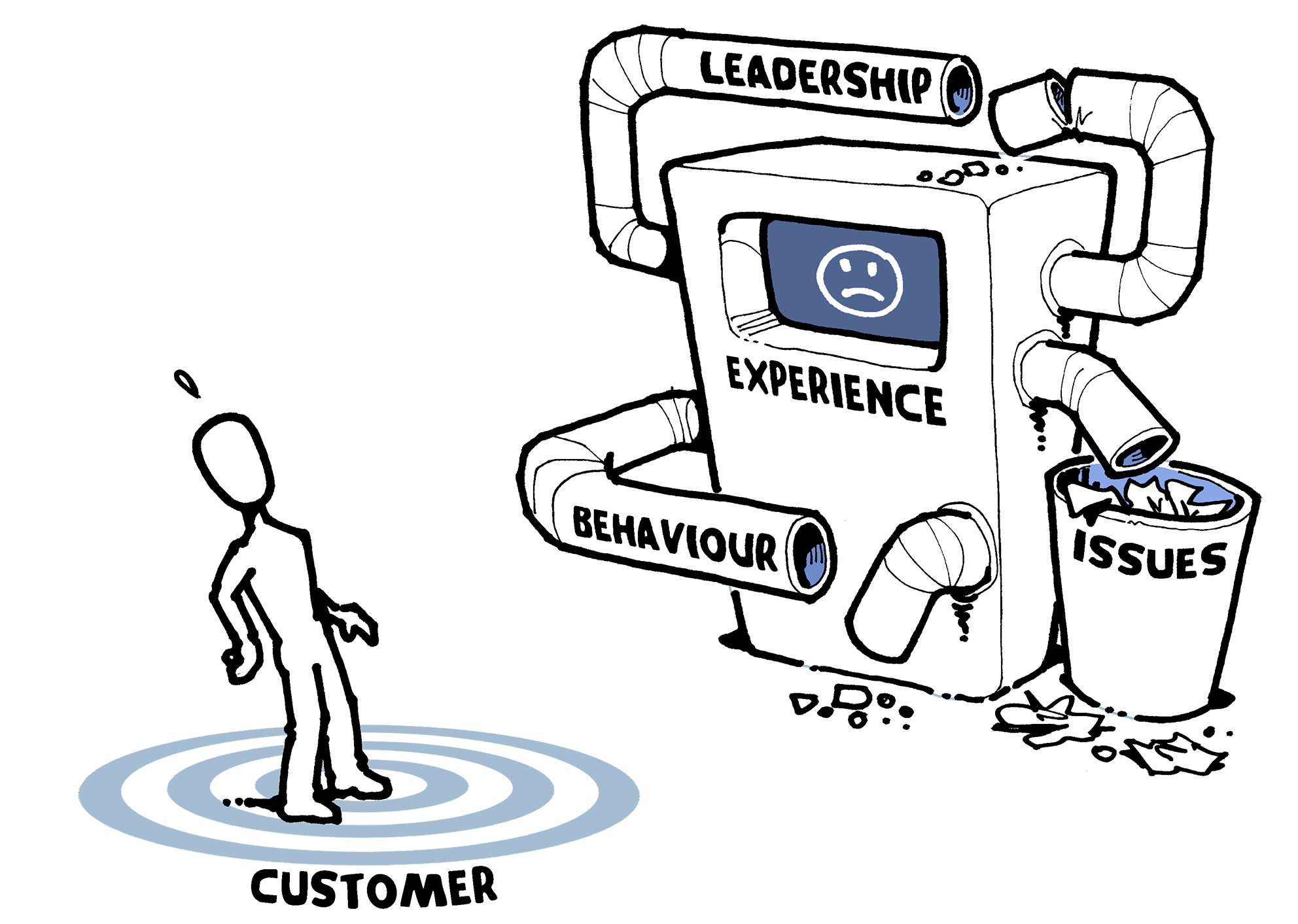
Customer Experience, commonly known as CX, is everywhere. Private sector, public sector, and voluntary organisations have all embarked on CX initiatives with the aim to transform their services, empower employees, and optimise their operations.
Why? Fundamentally, it is because improving the customer experience can improve competitiveness and financial returns for an organisation. An oft-quoted Forrester Research report states that a: ‘one-point increases in CX scores can translate into approximately $10M’s – $100M’s in annual revenue.’1
Despite these compelling reasons to implement CX initiatives, it seems the theory is not translating into reality for many organisations. Microsoft commissioned a study of CX projects in Australian financial services. In their findings, they found: ‘More than four out of five (81 per cent) of financial organisations have had failed customer experience projects’.2
This is an incredibly high risk and poor return on the significant investment involved in CX initiatives. Therefore, the question becomes, given the great benefits of CX initiatives, is there a way to ensure their success? Certainly, there is plenty of advice available. Indeed, you may have heard some of these ‘must do’s’ before:
- Create a dedicated customer driven CX team
- Focus on delighting your customers and continually listen to your customers to obtain insights
- Prioritise work on customer value from a backlog of ideas
- Ensure you map the end-to-end customer journey and remove pain points
- Break down silos across the organisation; create small cross-functional empowered and autonomous teams
- Create a safe-to-fail culture
- Be outcome driven; measure customer value and link back to business value
- Ensure single ownership of the CX initiative and instil a CX culture
All these recommendations sound great; however, the challenge is to convert these words into actions that will be embraced by the people who have to implement and work with the changes to their well-established working patterns. Every day.
Not surprisingly, the commonly adopted ‘do it to people’ approach to CX initiatives ends in concerted resistance within the organisation and is seen as a lamentable failure by its leaders. Why? Because initiatives that threaten underlying assumptions and beliefs that shape behaviour are simply resisted until the initiatives are judged to be a mistake, a failure, or a complete waste of time and money.
Today’s CX initiatives lack coherent organisational theory to help guide change. They also lack practical methods and leadership tools required to solve core organisational issues such as control from above; negative mythologies underpinning culture; stultifying systems and structures; quality of leadership; unproductive behaviour and activity; and lack of clarity in role, accountability, authority, and working relationships. Through a lack of practical methods and leadership tools to solve core issues, along with an absence of real knowledge and coherent theory, potential benefits are predictably constrained and often not realised at all.
Progressive leaders question the efficacy of today’s CX initiatives, and with good reason. These initiatives lack guiding theory, practical methods, and leadership tools to unlock the profound benefits of improved customer and employee experience. When these critical and fundamental parts of the change process are adopted, when the context for improvement is driven by what creates value for customers and how best to service them, when people are organised and enabled to do that work more effectively, and when productive leadership practices are embedded, the result is a positively viewed and productive organisation. That is a successful CX initiative.

This article contains excerpts from Chapter 6 of our latest book Reconceive: New thinking for progressive leaders to create productive, positively viewed service organisations
SUBSCRIBE FOR LATEST ARTICLES
If you’d like to read our latest articles then we can send them to you each time they are published. Please subscribe below.

See, e.g., ‘CMO Collaborators Fill the Gap in the C-Suite to Drive Business Growth, Accenture, Interactive Research Finds’, Accenture Newsroom, 3 Oct 2018. ↩
‘Microsoft urges financial services firms to tackle data blindspots to reduce risk of costly failed CX projects’, Microsoft, Feb 2019. https://news.microsoft.com/en-au/features/microsoft-urges-financial-services-firms-to-tackle-data-blindspots-to-reduce-risk-of-costly-failed-cx-projects/ ↩